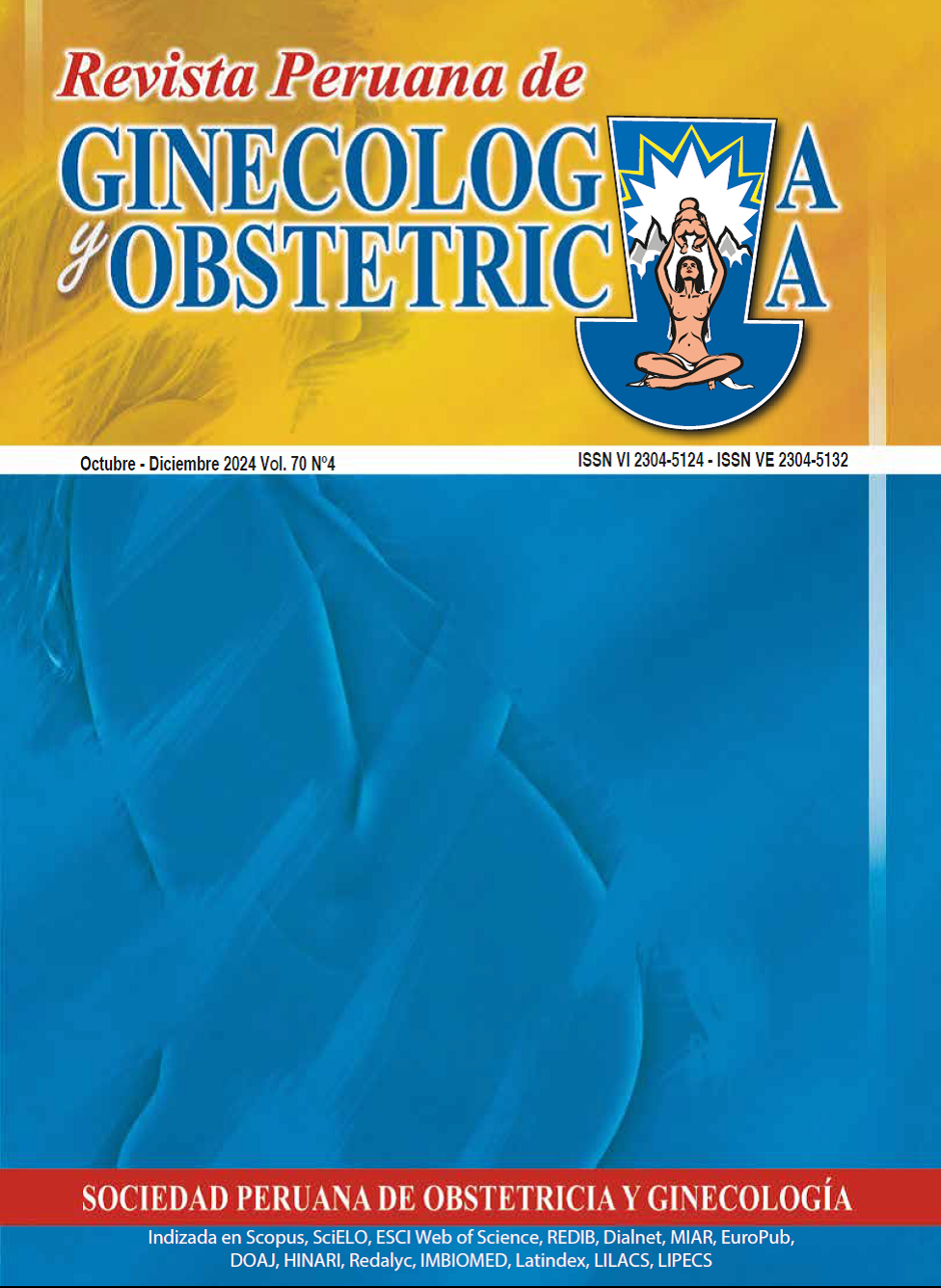Tratamiento actual del cáncer de cuello uterino: avances y perspectivas
DOI:
https://doi.org/10.31403/rpgo.v70i2695Palabras clave:
Neoplasias del cuello uterino, Laparoscopy, HisterectomíaResumen
El tratamiento estándar del cáncer de cuello uterino en estadios tempranos se realiza principalmente
por laparotomía. La evaluación de los ganglios linfáticos es fundamental, determinada por los
ganglios centinela y la linfadenectomía pélvica. Si se identifica compromiso ganglionar
intraoperatorio, es preferible evitar la disección y optar por quimiorradioterapia. La histerectomía
radical tipo C es el enfoque habitual, aunque en pacientes de bajo riesgo puede considerarse una
histerectomía extrafascial. El estudio SHAPE sugiere que no hay diferencias significativas en la
supervivencia libre de recurrencia entre ambos tipos de histerectomía. Para las mujeres jóvenes que
desean preservar su fertilidad, la conización o la traquelectomía radical son opciones viables en
estadios IA2-IB1. En los estadios IB3 y IIA2 se prefiere la quimiorradioterapia concurrente, que ha
mostrado resultados de supervivencia más favorables. La quimioterapia neoadyuvante se aplica en
contextos donde la radioterapia no está disponible. Para pacientes con enfermedad temprana, la
radioterapia puede ser una alternativa si existen contraindicaciones para la cirugía. Finalmente, se
recomienda la radioterapia adyuvante para aquellas con factores de alto riesgo tras la cirugía,
mientras que las pacientes de bajo riesgo no requieren tratamiento adicional, permitiendo así un
enfoque personalizado en función de las características individuales de cada paciente.
Descargas
Descargas
Publicado
Cómo citar
Número
Sección
Licencia
Derechos de autor 2024 Joan Flaubert Pérez Villena

Esta obra está bajo una licencia internacional Creative Commons Atribución 4.0.
Esta revista provee acceso libre inmediato a su contenido bajo el principio de que hacer disponible gratuitamente la investigación al publico, lo cual fomenta un mayor intercambio de conocimiento global.















